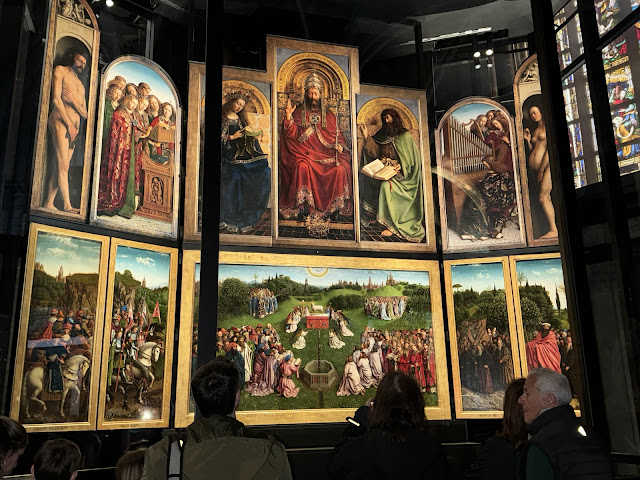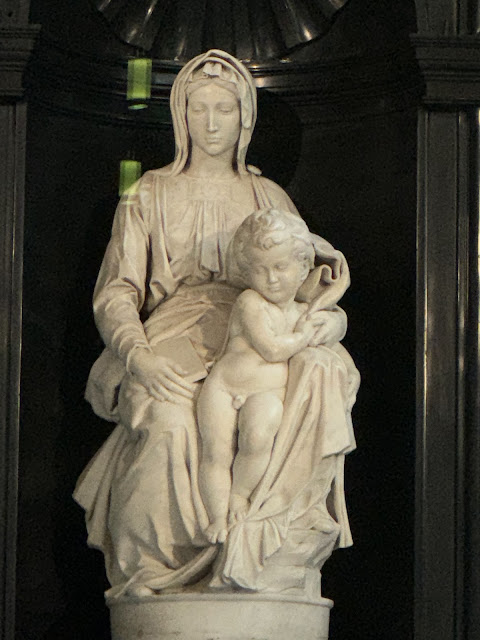It was a long and cold and demanding day. Bus departed at 8AM and didn't return until past 6PM. Passenger talked about walking 15,000 to 20,000 steps. I would not have made it
I only walked 1292 steps because I was among the very few who remained behind on the MS Esprit. I instead did my blog, watched TV and rested. While those that went were proud of surviving this ordeal, I enjoyed my solitude and warm comfort. My thought was why walk around Ghent and Bruges when I could instead bask in security and contentment. I do have a lot of photos of the tours because I have a partner who went.
But let me begin by saying a few things about Ghent and Bruges, beginning with the former.- Ghent had a population of 50,000 in 1300, making it one of the largest and richest cities in the Late Middle Ages.
- Today, 265,086 people.
- Located 48 miles from Flanders Field, where World War I battles occurred. Remember the poem In Flanders Fields?
- Treaty of Ghent adopted on Christmas Eve 1814 formally ended the War of 1812 between Great Britain and the U.S.
- Was occupied by Germany in both world wars, but escaped severe destruction, thus, much of city's medieval architecture remains intact,
- Bruges is in West Flanders with a population of 118,509.
- Known to have Bronze and Iron Age settlements.
- The Bourse opened in 1309, likely the first stock exchange in the world.
- Best known landmark is the Belfry of Bruges, a 13 century UNESCO World Heritage Site with 47 bells.
A few photos.
The Ghent Altarpiece is called the Adoration of the Mystic Lamb, by Hubert and Jan van Eyck.The Madonna of Bruges was crafted by Michelangelo.
I can go on and on, for there are more than 75 photos, but I'll stop here.
-














Comments
Post a Comment